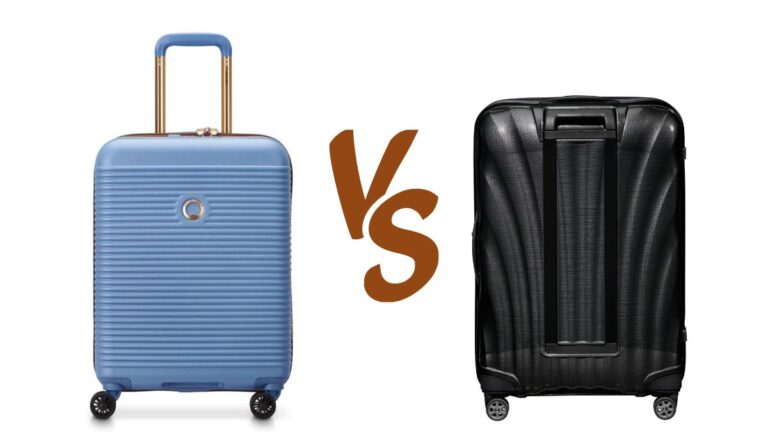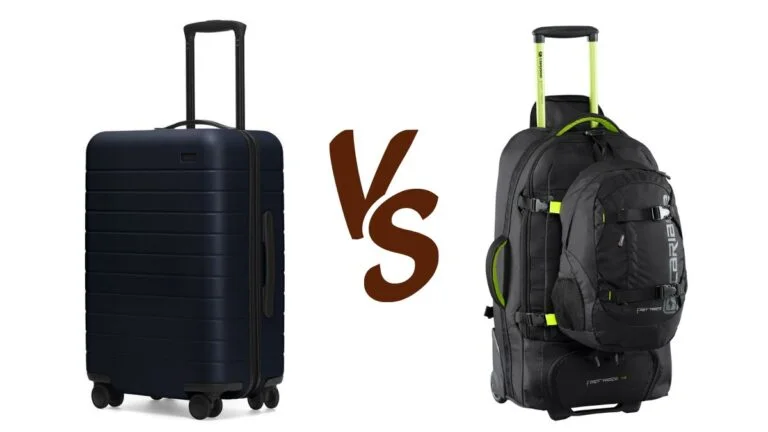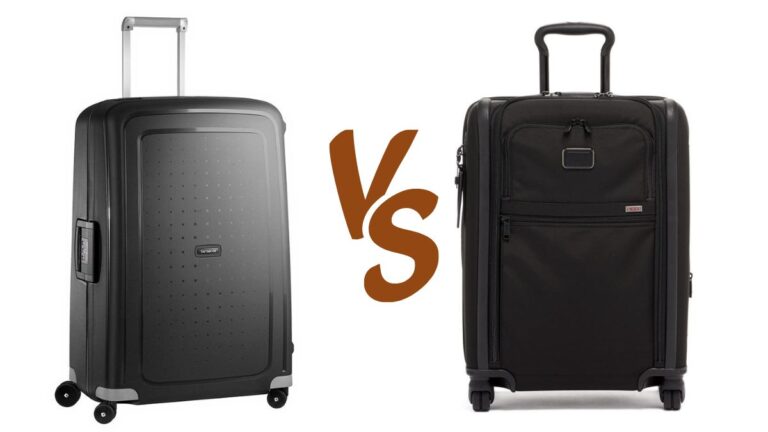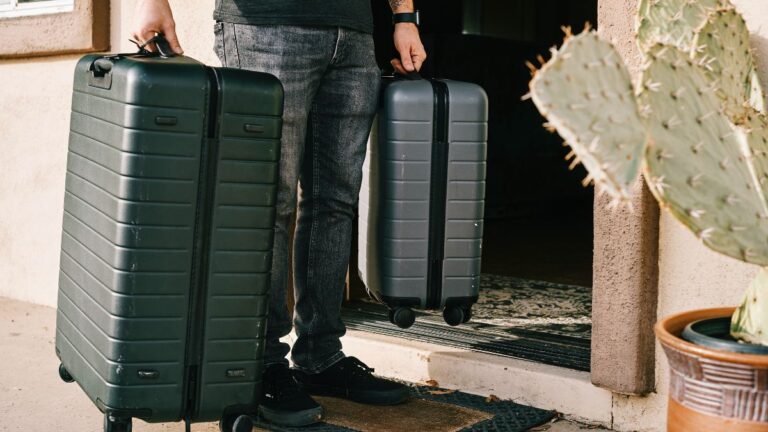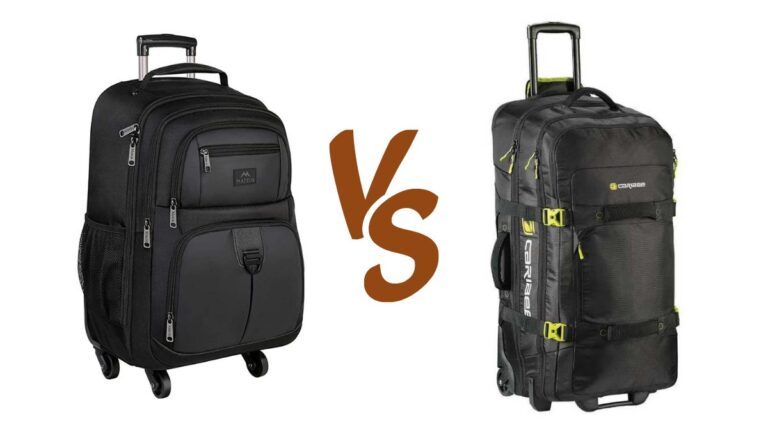How Big is a Carry-On Bag? Understanding Dimensions & Capacity

As participants in Amazon Associates and other programs, we earn from qualifying purchases. This comes at no additional cost to you. For more details, see our Affiliate Disclosure.
Navigating the ins and outs of air travel can be a daunting endeavor, especially when it comes to understanding the specifics of carry-on luggage sizes and capacity. How big is a carry-on bag, you might ask? This is a common query, and one with a not-so-simple answer. Differences in airline regulations, variations in bag types, and even the way a bag’s size is measured can all impact the answer.
This article aims to demystify this aspect of air travel, providing you with a comprehensive guide on carry-on bag dimensions and capacity, ensuring your future journeys are as smooth as possible.
Understanding Carry-On Bag Dimensions: The Basics
Carry-on bag dimensions refer to the physical measurements of the bag, typically expressed in terms of length, width, and height (or depth). These dimensions are used by airlines to establish guidelines about what size of bag can be brought onto an airplane and stored in the overhead bin or under the seat in front of you.
Generally, airlines measure carry-on luggage using a linear inch method, where the total dimensions (length + width + height) of the bag are added together. A common standard in many airlines, especially in the United States, is a total of 45 linear inches (115 cm), often broken down as 22 x 14 x 9 inches. This measurement, however, is not universal and can vary between airlines and regions.
It’s also crucial to note that the listed dimensions of a bag often refer to its interior compartment, not including external features like wheels, handles, or pockets, which can also contribute to the bag’s overall dimensions. Therefore, when selecting a carry-on bag, it’s important to consider these factors to ensure your bag meets airline requirements.
Here’s an example of a table that showcases the maximum allowed carry-on bag dimensions for some popular airlines. However, please note that these can change, and you should always check the most current regulations on the airline’s official website before you pack for your trip.
| Airline | Maximum Size (inches) | Maximum Weight (lbs) |
|---|---|---|
| American Airlines | 22 x 14 x 9 | No limit |
| Delta Airlines | 22 x 14 x 9 | No limit |
| United Airlines | 22 x 14 x 9 | No limit |
| Southwest Airlines | 24 x 16 x 10 | No limit |
| JetBlue Airways | 22 x 14 x 9 | No limit |
| Alaska Airlines | 22 x 14 x 9 | No limit |
| Spirit Airlines | 22 x 18 x 10 | No limit |
| Ryanair | 21.6 x 15.7 x 7.8 | 22 |
| easyJet | 22 x 17.7 x 9.8 | No limit |
| Air France | 21.6 x 13.7 x 9.8 | 26 |
| Cathay Pacific | 22 x 14 x 9 | 15 |
| Emirates | 22 x 15 x 8 | 15 |
| Qantas | 22 x 14 x 9 | 15 |
| Lufthansa | 21.6 x 15.7 x 9 | 17 |
| All Nippon Airways | 22 x 16 x 10 | 22 |
Remember, these are the maximum dimensions and weights allowed for carry-on luggage, including handles and wheels. Also, most airlines allow an additional personal item, like a laptop bag or purse, with its own size restrictions.
Airline Regulations: The Variation in Carry-On Size Limits
A significant factor that determines the size of your carry-on bag is the specific airline you’re flying with. Though there are general guidelines, each airline establishes its own size limits for carry-on luggage, which can vary widely. Understanding these regulations is essential to avoid unexpected complications during your journey.
In the United States, most major airlines, like American Airlines, Delta, and United, generally permit carry-on luggage of up to 45 linear inches (22 x 14 x 9 inches). However, some budget airlines may have stricter rules, allowing smaller bags in an effort to save cabin space.
European airlines, such as Ryanair and easyJet, have historically had more stringent size regulations, with Ryanair’s maximum size for carry-on luggage being notably smaller at 21.6 x 15.7 x 7.8 inches. However, these airlines do often allow an additional smaller bag or personal item as well.
It’s also worth noting that some airlines, particularly in Asia, might have weight restrictions for carry-on bags in addition to size limits. For example, airlines like Cathay Pacific and All Nippon Airways limit the carry-on bag’s weight to around 15-22 pounds, depending on the flight class.
Keep in mind that these limits can change and vary, so it’s always best to check the airline’s official baggage policy before packing for your trip.
Types of Carry-On Bags: Backpacks, Suitcases, and More
Carry-on luggage comes in all shapes, sizes, and designs. Understanding the types of carry-on bags available and their unique features can help you choose the best option for your travel needs. Here are some of the most common types:
- Rolling Suitcases: These are the classic carry-on bags, often rectangular, and designed to fit snugly in the overhead compartments. They come with a set of wheels (usually 2 or 4) and a retractable handle for easy mobility. They are excellent for organization, often coming with various compartments and pockets.
- Travel Backpacks: These are ideal for those who prefer to travel light. They’re versatile, easy to carry, and can often expand or compress to accommodate your packing needs. Some are specially designed to meet carry-on size regulations, but the lack of a rigid structure means they can over-expand if overpacked.
- Duffel Bags: Duffel bags are soft, lightweight, and flexible. They can be a good option for short trips, but they often lack the organizational features of suitcases and backpacks.
- Underseat Bags: These smaller bags are designed to fit under the seat in front of you, making them perfect for essentials you want to keep close at hand during flight.
- Garment Bags: If you’re traveling with formalwear, a garment bag can help keep your clothes wrinkle-free. They are typically folded over and can be carried on, but be sure to check your airline’s policy as some may consider it a checked bag.
Each type of carry-on bag has its benefits and drawbacks, and the best one for you depends on the nature and length of your trip, as well as your personal packing habits.
Measuring Your Carry-On Bag: The Methodology
Knowing how to correctly measure your carry-on bag is crucial in ensuring it complies with airline size restrictions. It might seem straightforward, but there are some specific factors to consider in order to get an accurate measurement. Here’s a simple step-by-step guide on how to do it:
- Choose the Right Tools: Use a flat, rigid measuring tool like a tape measure or a ruler to get accurate readings.
- Measure the Length: Place your bag upright on a flat surface, just as you would while stowing it in the overhead compartment. The length is typically the longest side of the bag, from bottom to top.
- Measure the Width: With the bag in the same position, measure the shorter side from left to right.
- Measure the Height (Depth): The height, or depth, is the measurement from the back to the front of the bag.
- Include Wheels and Handles: This is an area where many people get tripped up. The full dimensions of the bag, as considered by airlines, often include any protruding elements like wheels, handles, or exterior pockets. Make sure you include these in your measurements.
- Check the Total Linear Dimensions: Add up the length, width, and height. This total should comply with the airline’s linear dimension limit for carry-on luggage.
When buying a new bag, the manufacturer’s listed dimensions might refer only to the inside of the bag (the packing space), excluding wheels and handles, so always double-check the actual measurements.
Once you have the dimensions figured out, you might be wondering how much can you actually fit in your carry-on? Let’s move on to understanding carry-on bag capacity.
Carry-On Bag Capacity: What Can You Actually Pack?
The capacity of a carry-on bag refers to the volume of space available for packing, typically measured in liters. While the outer dimensions of the bag are constrained by airline regulations, how that interior space is designed and utilized can significantly impact what you’re able to pack.
- Design and Organization: Some bags are designed with multiple compartments and pockets to help organize your belongings, while others offer one large packing space. The choice between these depends largely on your packing style. While compartments can be useful for organizing, they might limit the size of the items you can pack.
- Packing Cubes and Compression Bags: These accessories can help optimize the space in your carry-on bag. Packing cubes help in organizing your clothes and make it easier to find what you need without unpacking everything. Compression bags can reduce the volume of items like jackets and bulky clothing, freeing up more space in your bag.
- Smart Packing Techniques: The way you pack your carry-on can also affect its capacity. Rolling clothes instead of folding can save space and reduce wrinkles. Packing heavier items at the bottom can help with weight distribution and stability.
- Considerations for Personal Items: In addition to your carry-on, most airlines allow one personal item like a handbag, laptop bag, or a small backpack. This gives you additional packing space, so consider using this for your essentials and items you may need to access easily during the flight.
The capacity of your carry-on bag and how you utilize it can influence the ease and comfort of your travel. It’s always a good idea to pack strategically, and only the necessities for carry-on travel, as overpacking can lead to issues with bag size and weight.
Common Mistakes and Misconceptions About Carry-On Size
When it comes to carry-on luggage, some common misunderstandings and errors can lead to stressful situations at the airport. Here are a few to be aware of:
- Assuming One Size Fits All: As we’ve mentioned, carry-on size limits can vary significantly from one airline to another. Always check the specific requirements for each airline you’ll be flying with, especially if you have connecting flights with different carriers.
- Overlooking Weight Limits: While a lot of attention is given to the size of carry-on luggage, many travelers overlook the weight restrictions that some airlines impose. Particularly on international or budget airlines, your carry-on may need to weigh under a certain limit, which can be as low as 15 pounds.
- Misinterpreting Listed Bag Dimensions: Remember, the dimensions listed by manufacturers often refer to the interior packing space of the bag and might not include external components like wheels and handles.
- Forgetting About Expanded Bags: Some bags have the ability to expand for additional packing space. However, if you’ve expanded your bag, it may no longer meet the size regulations for carry-on luggage.
- Ignoring Personal Item Size: Your personal item (such as a purse, briefcase, or laptop bag) usually has size limits as well, and it needs to fit under the seat in front of you. Don’t overlook these regulations when selecting and packing your personal item.
Avoiding these common mistakes can help ensure a smoother journey, free from the stress of repacking or unexpected check-in fees.
Tips for Maximizing Carry-On Bag Capacity
Making the most of your carry-on bag’s capacity requires careful planning and smart packing techniques. Here are some tips to help you maximize the space in your carry-on bag:
- Use Packing Cubes: Packing cubes are a game-changer when it comes to organization and space optimization. They come in various sizes and can help compress your clothes, making them take up less space in your luggage.
- Roll, Don’t Fold: Rolling your clothes instead of folding can save a significant amount of space. It also helps prevent wrinkles in your clothing.
- Utilize All Spaces: Make use of every nook and cranny. Shoes can be filled with socks or other small items. The corners and edges of your bag can be filled with rolled clothing or other soft items.
- Pack Versatile Clothing: Choose clothing items that can be mixed and matched to create different outfits, reducing the number of items you need to pack.
- Limit Bulky Items: If possible, wear your bulkiest items, like heavy shoes or jackets, on the plane to save space in your carry-on bag.
- Follow the 3-1-1 Liquids Rule: Remember that all liquids, gels, aerosols, creams, and pastes in your carry-on must be in 3.4 ounce (100ml) or smaller containers, all of which must fit in a 1-quart clear plastic bag. This rule will help you limit the amount of toiletries you pack.
- Leverage Your Personal Item: Your personal item can provide a significant amount of extra packing space. Just ensure it fits under the seat in front of you.
- Consider Multi-Functional Items: Items that serve more than one purpose can save you space. For example, a jacket with many pockets can provide extra storage while travelling.
These tips should help you efficiently use your carry-on bag’s capacity, making your journey more comfortable and avoiding the need for checked luggage.


